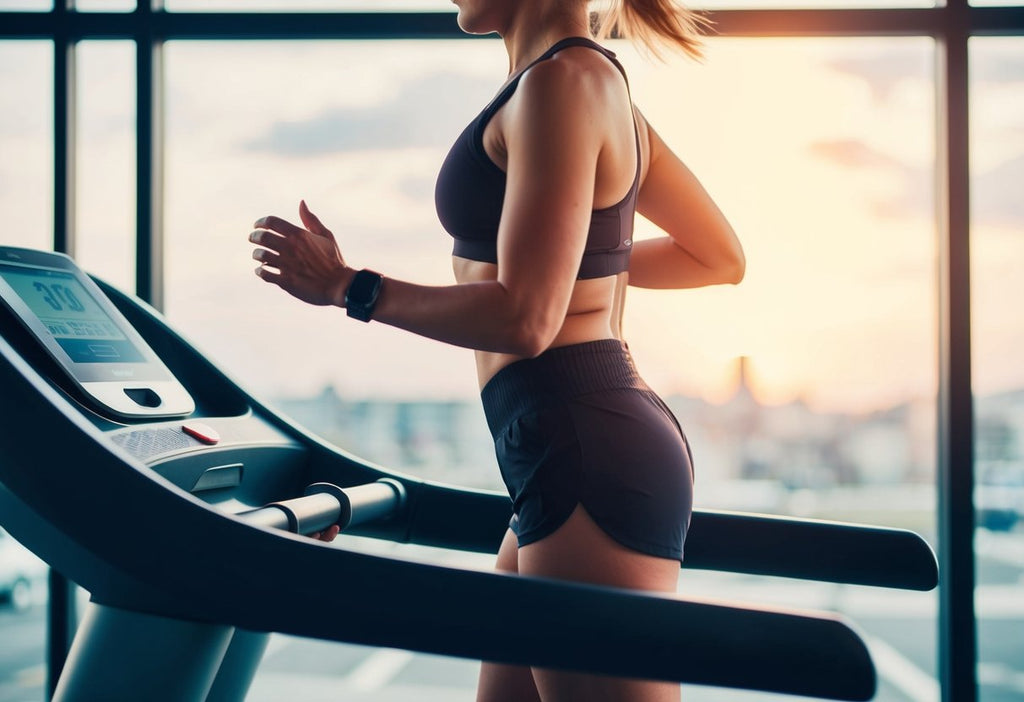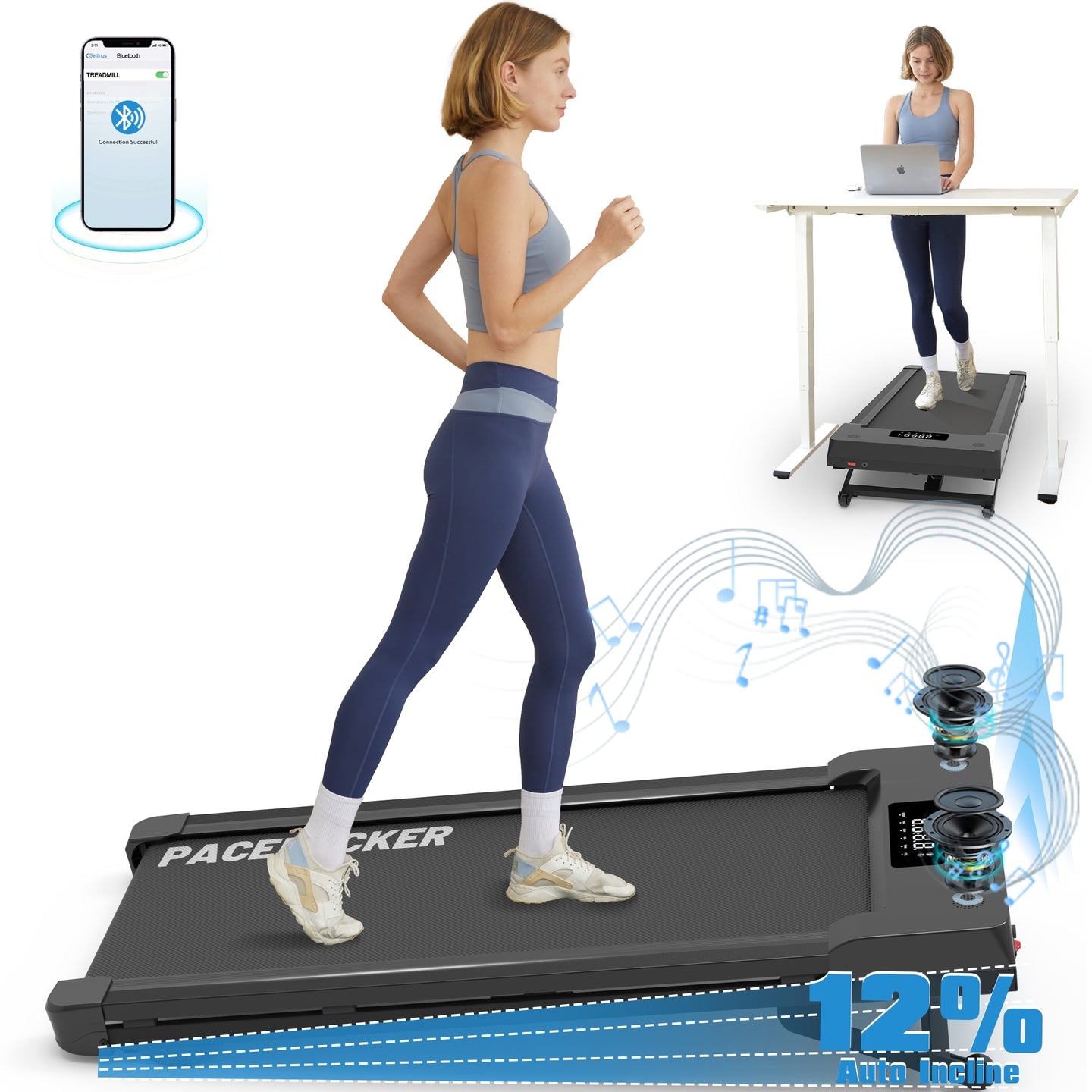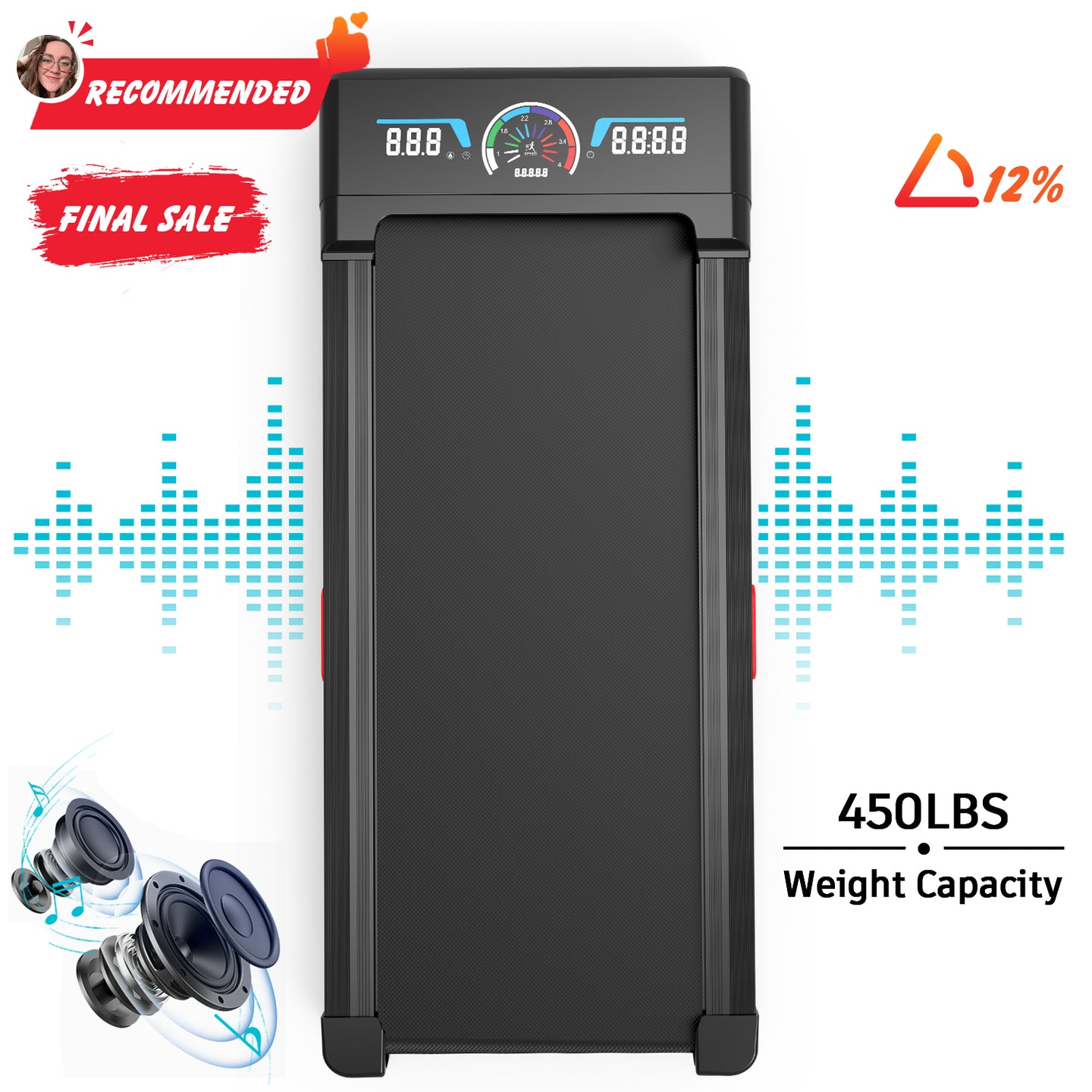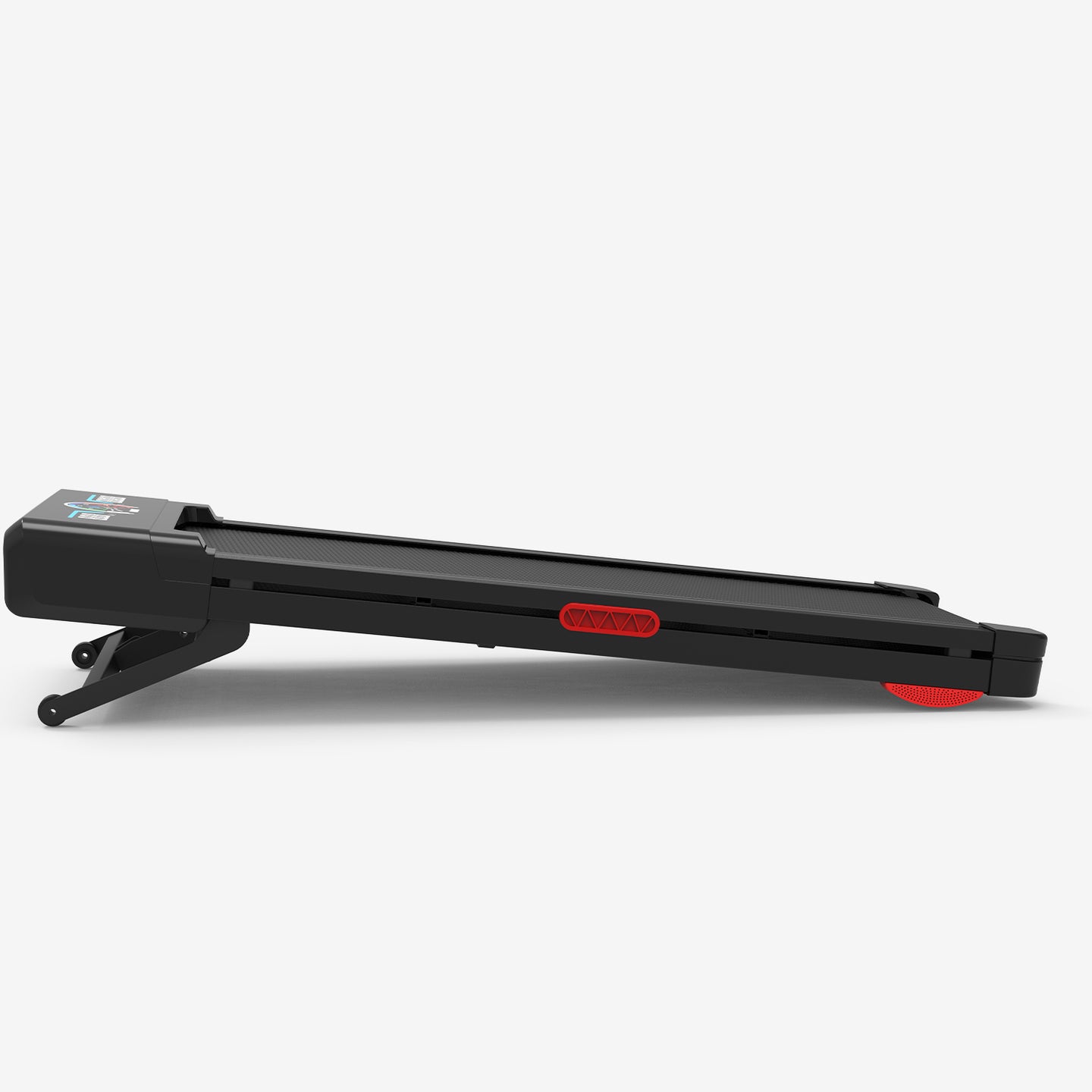Can You Use a Walking Pad on Carpet
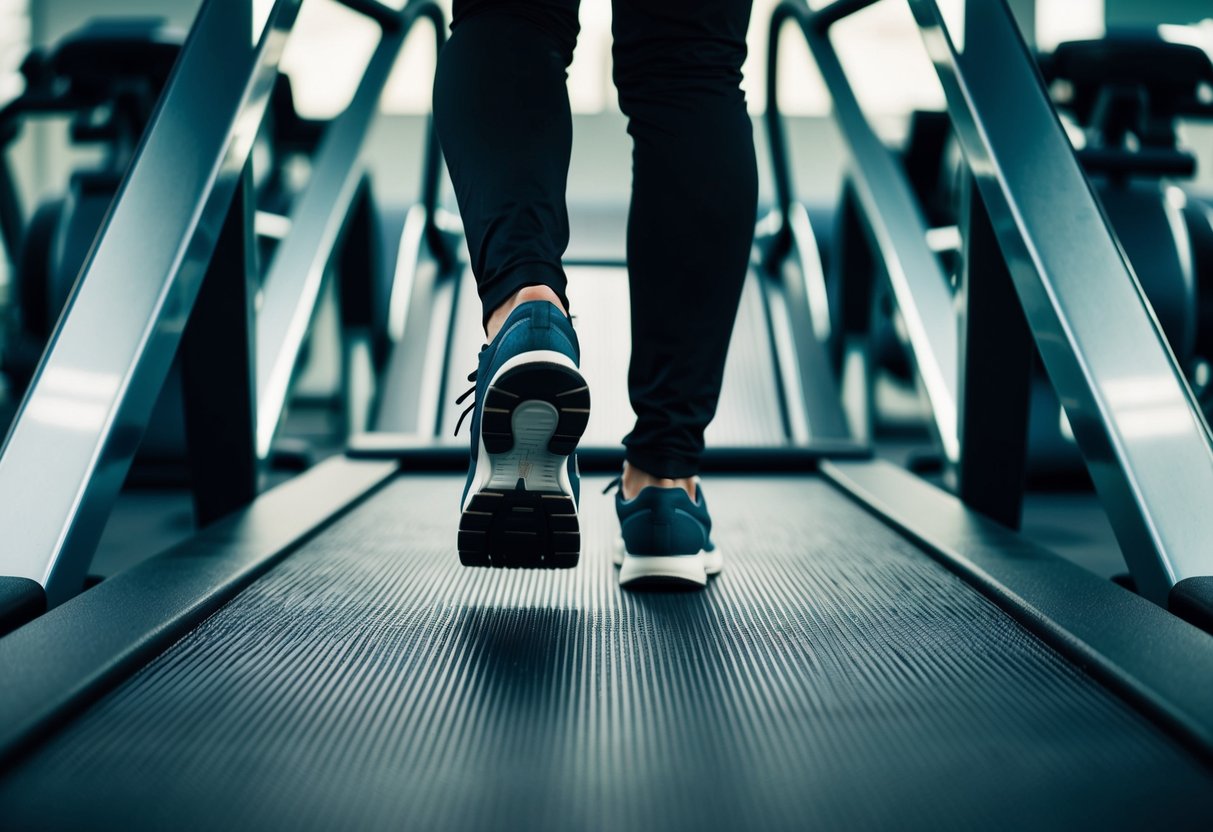
Don’t forget to check out our Pacerocker, Trailviber, and Trailviber Auto Incline walking pad treadmills.
Walking pads have become popular for those of us looking to stay active indoors. But there's a question many of us face: can we use them on carpet? Yes, you can use a walking pad on carpet, but the experience might differ slightly from using it on hard floors. This article will explore this topic, helping us get the most out of our walking pad setup.
When we set up a walking pad on carpet, there are a few things to consider to ensure it works smoothly. The carpet's thickness can affect stability; a denser carpet might make the pad less stable. Additionally, the type of padding underneath the carpet could influence the pad's performance. It's all about adjusting to the change in surface.
To enhance our experience, we might need to focus on maintaining the walking pad properly. Monitoring the level of support and checking the pad's condition regularly will help us walk safely and securely. This way, we can make the most of our home workouts, even on carpeted surfaces.
Key Takeaways
- Walking pads can be used on carpets but with some adjustments.
- Carpet thickness can affect walking pad performance.
- Regular maintenance ensures safety and stability.
Understanding Walking Pads
Walking pads, or under-desk treadmills, are a great way for us to stay active. By using these compact devices, we can achieve daily movement goals while working or doing other tasks. Their design is perfect for home use, including on carpets.
Walking Pad Basics
Walking pads are compact exercise equipment that fit easily into small spaces. Unlike traditional treadmills, they focus on walking rather than running. Most models have adjustable speed settings, which allows us to control how fast we go. This feature makes them suitable for various fitness levels.
These devices are designed to be user-friendly, making them ideal for those of us who want a simple way to get some exercise. They’re especially helpful when we want to stay active but are limited by time or space. Walking pads are often quiet, which is perfect for multi-tasking without disturbing others.
Benefits of Using a Walking Pad
Walking pads provide a great low-impact exercise option, which is gentle on our joints. This type of exercise helps improve cardiovascular health and can aid us in burning calories. By walking regularly on a pad, we can maintain a good level of fitness at our own pace.
Using a walking pad regularly encourages consistent movement. This can help us integrate physical activity into our daily routines. Since they focus on low-impact activity, walking pads are a fantastic way to keep moving throughout the day without strenuous effort. This is especially valuable for those of us spending long hours at a desk.
Walking Pads on Carpeted Surfaces
When considering using a walking pad on carpet, we need to evaluate how different carpet materials affect performance and stability. It’s important to address how walking pads interact with various carpet types and what it means for maintenance and comfort.
Impact on Carpet Materials
Carpet material and thickness greatly impact the experience of using a walking pad. For instance, low-pile carpets, like Berber carpet, can offer minimal resistance, allowing a smoother walking experience. On the other hand, high-pile carpets, such as shag, may lead to increased wear, both on the carpet and the walking pad.
We should also consider the carpet’s durability. Thick carpets may compress over time under consistent use, causing wear and tear. This could also lead to indentations that affect the carpet's appearance. It's essential to ensure that both the carpet and walking pad materials can withstand this repeated pressure.
Stability on Carpet
Stability is crucial for safe use of a walking pad on carpeted surfaces. Carpet thickness can affect how stable the walking pad feels. On a high-pile carpet, the walking pad might feel less secure. This could lead to a wobbling sensation, which isn't ideal for our balance or comfort during workouts.
For those using a walking pad on softer or thicker carpets, an added anti-slip mat might be necessary. This can help increase the pad's grip and reduce movement. Using an anti-slip mat could be the key to a stable and comfortable walking session on any carpet.
Performance of Walking Pads on Carpet
The performance of walking pads can vary depending on the type of carpet. Low-pile carpets generally allow better performance by providing a firm base for the walking pad. This ensures that the pad operates smoothly, which is essential for maintaining an effective workout routine.
High-pile or outdoor carpets can present challenges. These surfaces might create friction, slowing the walking pad. This friction can also lead to overheating of the walking pad's motor, which can be detrimental over time. Evaluating these aspects helps us make an informed choice on how to achieve our fitness goals effectively on different carpet types.
Enhancing User Experience
When using a walking pad on carpet, we must consider safety measures, reduce noise levels, and ensure proper maintenance. These steps help improve our overall experience and let us enjoy better results.
Ensuring Safety and Comfort
Safety and comfort are vital when using a walking pad on carpet. We should use a non-slip mat or a protective mat underneath to enhance stability and traction. This not only keeps the pad in place but also prevents carpet damage.
Checking the weight capacity and maximum weight recommendation is crucial to avoid stability issues. A durable construction and proper cushioning can improve shock absorption, making our workout more comfortable.
Having a speed range that suits our fitness level is equally important. Adjusting it correctly can prevent accidents and ensure a more enjoyable experience.
Noise Reduction Techniques
Noise can be a concern when operating a walking pad on carpet. Noise level and vibration reduction are crucial for a peaceful workout environment. Using a walking pad mat helps in buffering sound and vibration.
We can also make adjustments to the machine. Checking the ventilation and ensuring regular maintenance can keep our walking pad functioning quietly. Keeping the speed range at a moderate level helps in minimizing noise.
A well-maintained pad operates more smoothly, adding to our comfort while protecting our ears from excessive noise.
Maintaining Your Walking Pad
To keep our walking pad in great shape, we must follow a routine maintenance plan. Regular cleaning eliminates dirt and debris that may increase moisture retention or affect the machine’s functionality.
Using a protective mat helps manage wear and tear. We must also check the shock absorption capability occasionally to ensure its effectiveness.
Lubrication and inspection of parts play key roles in extending the machine's life, enhance comfort, and avoid unnecessary repairs. Along with making our exercises more efficient, proactive maintenance diminishes potential issues over time.
Practical Considerations and Tips
Using a walking pad on carpet can add to our daily workout routine from the comfort of home. We need to think about the type of carpet, proper setup, and following the manufacturer’s guidelines to ensure a safe and efficient experience.
Choosing the Right Setup
When selecting a walking pad setup for carpet, we should first measure the space. This ensures a good fit. Size matters: make sure our walking pad fits comfortably in the area. We should also use a mat under the pad. This protects both the pad and the carpet.
Using a mat helps stabilize the walking pad and lowers the risk of damage to both the carpet and equipment. On hard surfaces, stability isn't a big issue, but on a carpet, it’s important. A walking pad can shift on carpet, leading to uneven wear or discomfort. So, a non-slip mat can provide the needed grip.
Dealing with Uneven and Thin Carpets
Thin carpets or uneven surfaces might pose challenges, but they can be managed with a few tweaks. For thin carpets, extra padding or a thicker mat between the walking pad and carpet can help level the surface. Low-pile carpets are generally better since they provide a more even surface.
If our carpet surface is uneven, it could affect the walking experience. Paying attention to leveling the setup can prevent issues with balance and comfort. Testing the stability before we start using the pad can save us from potential slips or surprises. We should adjust and test until we're satisfied with the setup.
Following Manufacturer’s Guidelines
We need to review the manufacturer’s instructions carefully. They provide essential guidance for safe operation. The guidelines usually include specifics on weight limits, how to properly care for and maintain the pad, and troubleshooting tips.
Regularly consulting the manual helps us avoid common mistakes. Each walking pad model might have unique features and limits. Knowing these specifics can help us tailor the experience to our personal needs and preferences. Following these guidelines helps ensure our pad lasts longer and performs better.
Frequently Asked Questions
When using a walking pad on carpet, it's important to choose suitable models and consider using extra mats for stability. Let's look at specifics to keep our workout space safe and effective.
What are the best walking pads suitable for use on carpeted floors?
Finding a walking pad that works well on carpet is key. Models with sturdy designs and good grip are recommended. These features help prevent slipping and ensure smooth movement.
Do I need a treadmill mat when placing a walking pad over carpet?
Using a treadmill mat can be beneficial. It protects the carpet, provides stability, and reduces noise. This can enhance the walking experience and prolong your equipment's life.
How does placing a walking pad on a carpet affect its performance and longevity?
Carpets can impact the performance of walking pads. Thick carpets may cause the pad to sink, affecting movement. Regular maintenance and placement on firm surfaces can help maintain its efficiency.
What precautions should be taken when using a walking pad on carpet?
Ensuring the walking pad is level is important. We should regularly check for signs of wear on the carpet and clean the area to prevent dust buildup. This keeps the pad running smoothly.
Can additional mats or yoga mats enhance the stability of a walking pad on carpet?
Adding mats beneath the walking pad can improve stability. Yoga mats can work well by providing an extra layer of grip. This helps in preventing any unwanted movement during use.
Are there any specific brands or models of walking pads that are recommended for carpet use?
Some brands design walking pads specifically for use on carpets. These models usually offer better support and grip. It's worthwhile to research and read reviews to select the best option for our needs.
Learn how to safely use a walking pad on carpet with essential tips and maintenance advice to optimize your indoor fitness experience at home.



